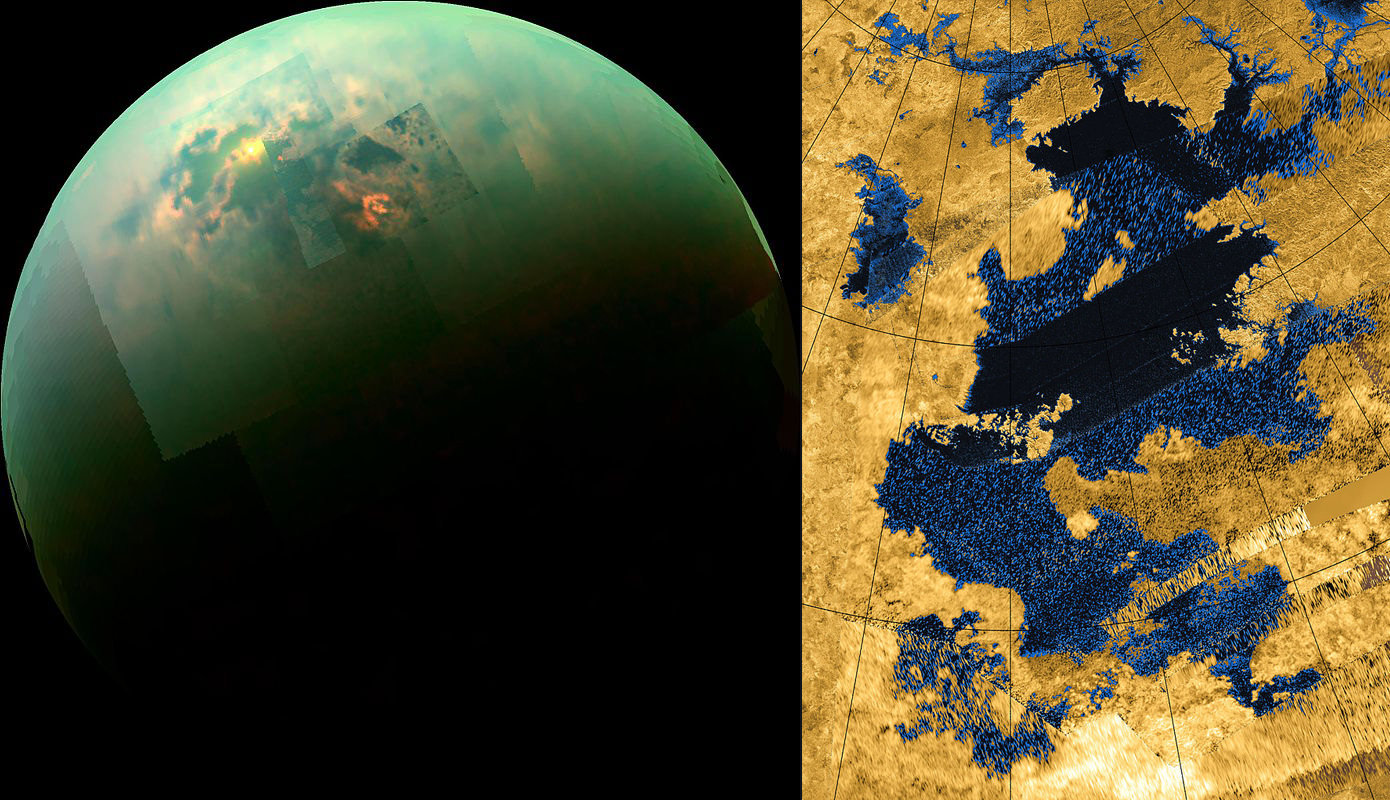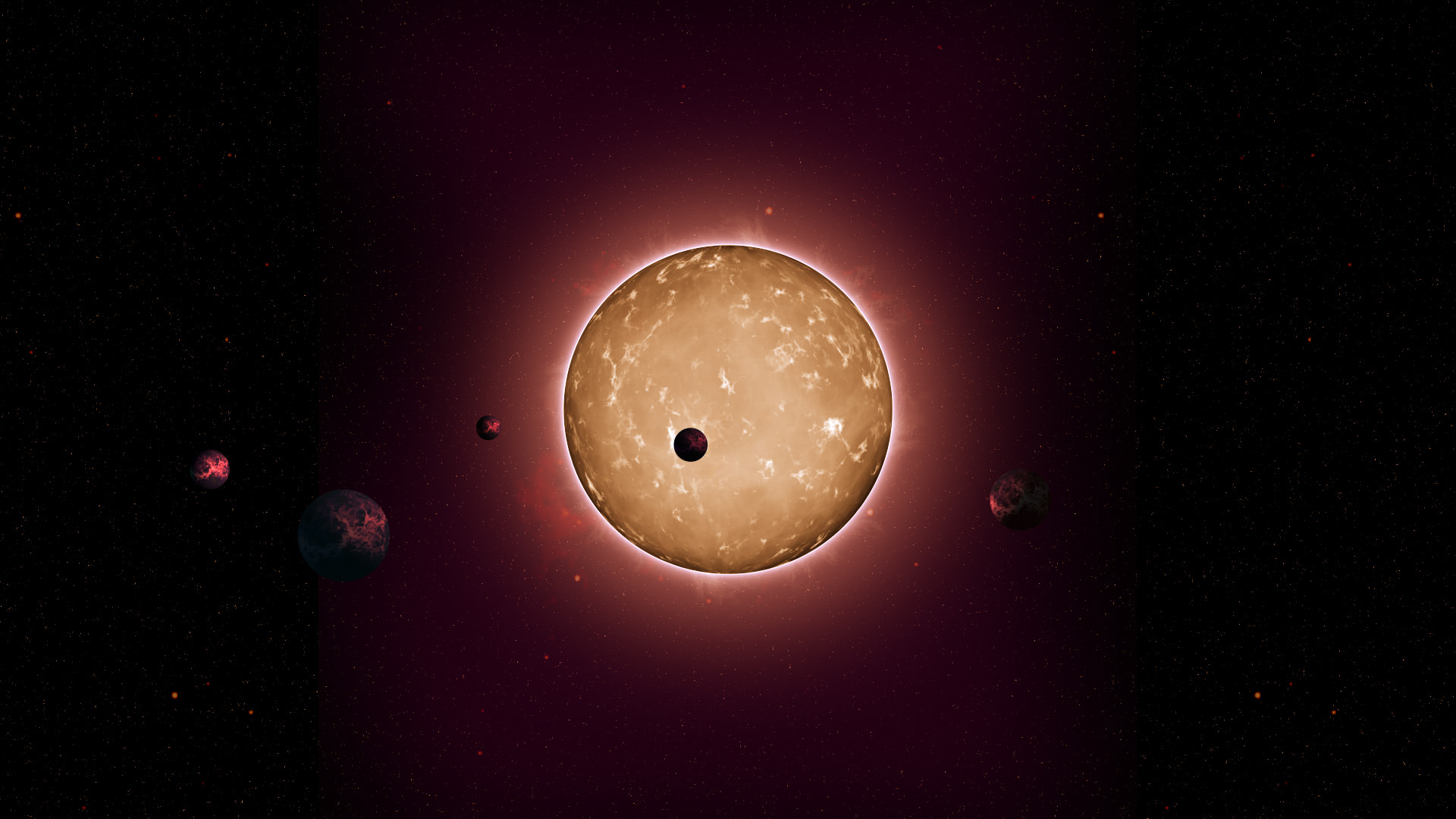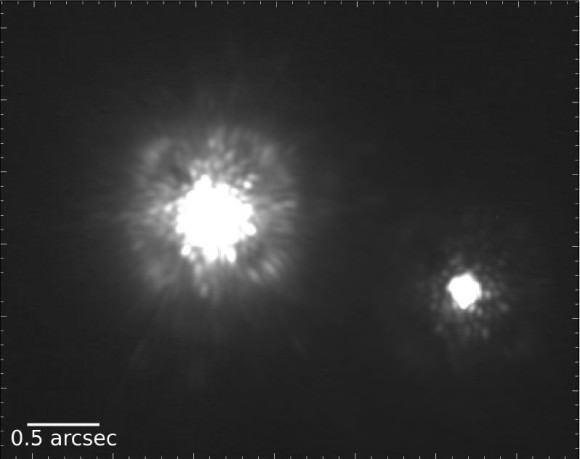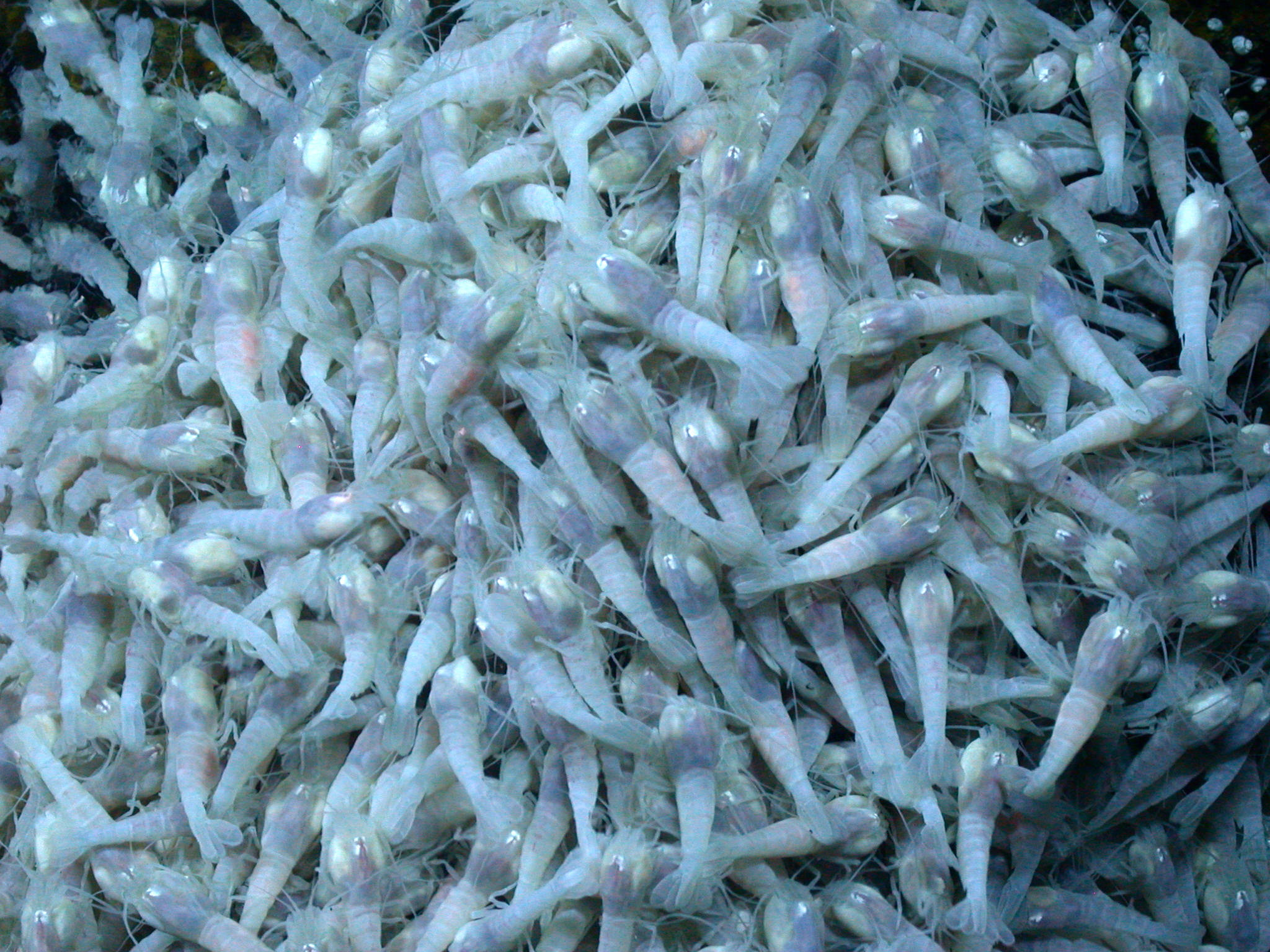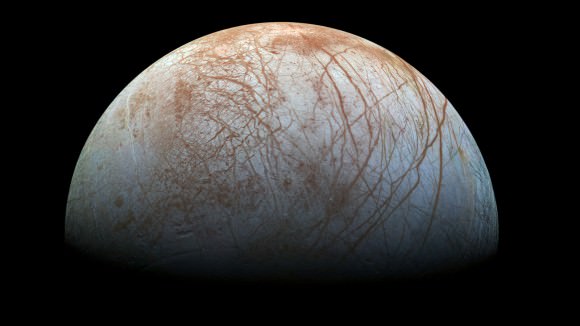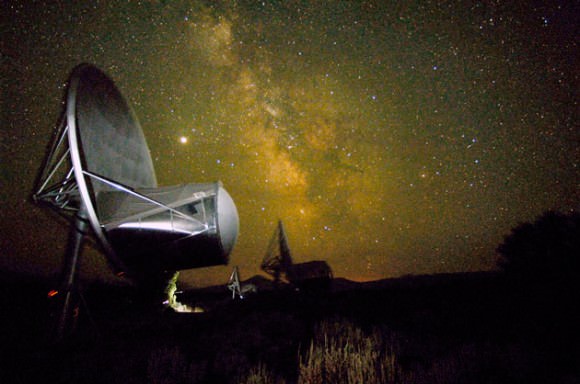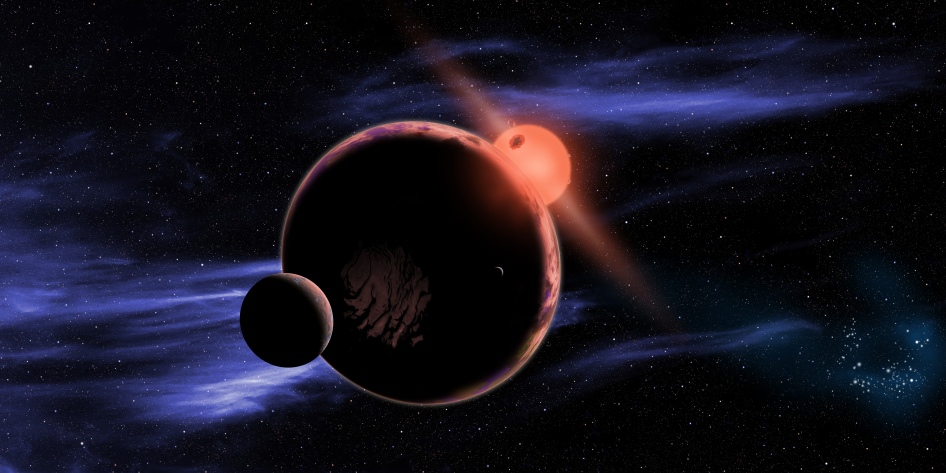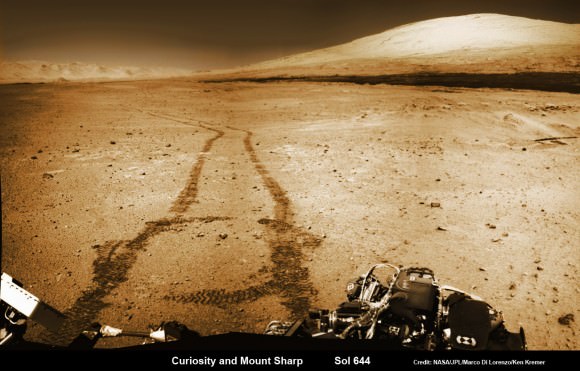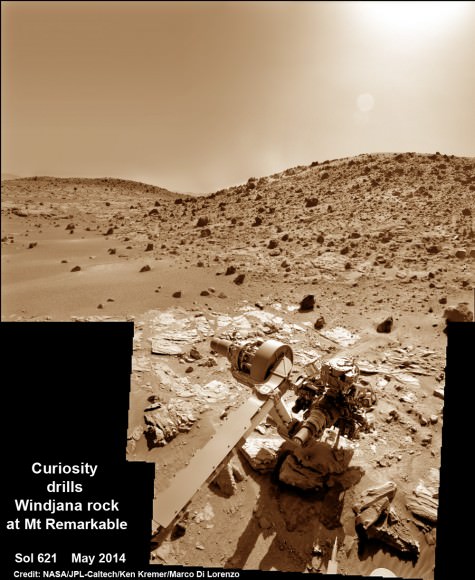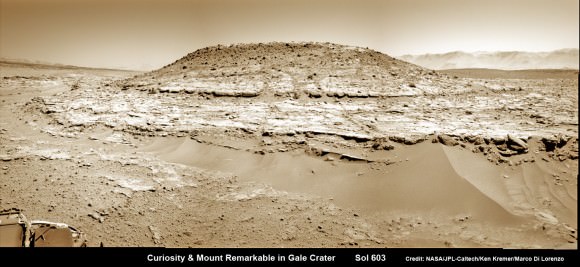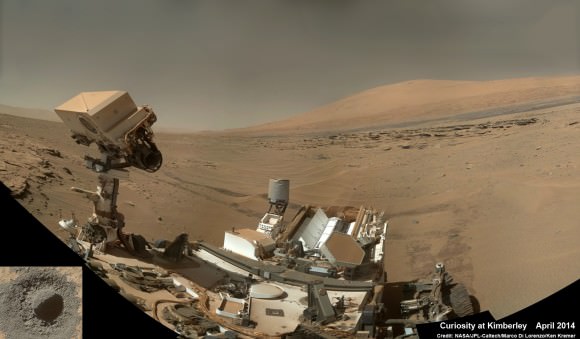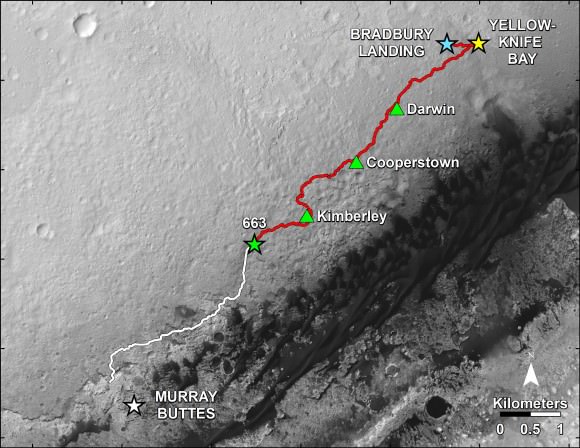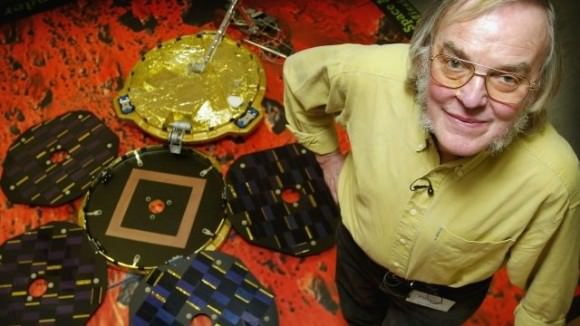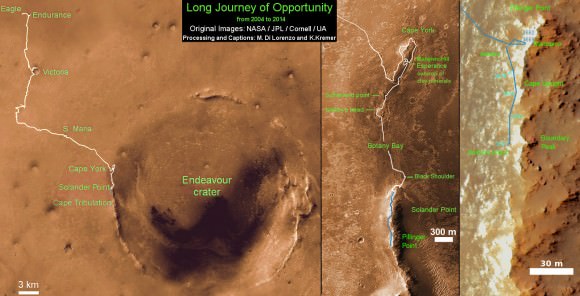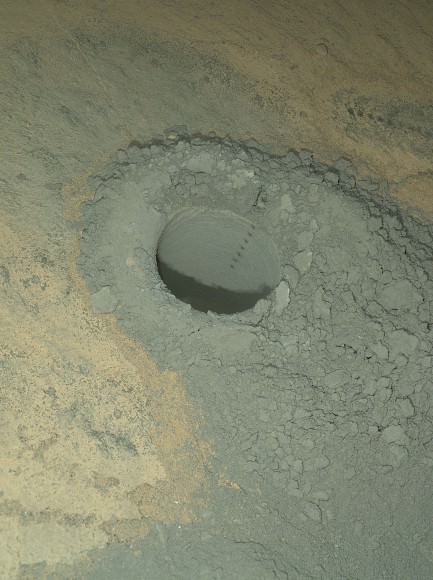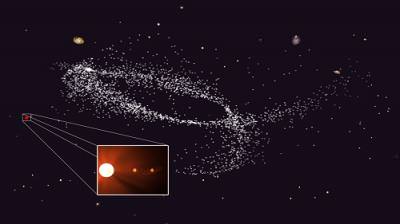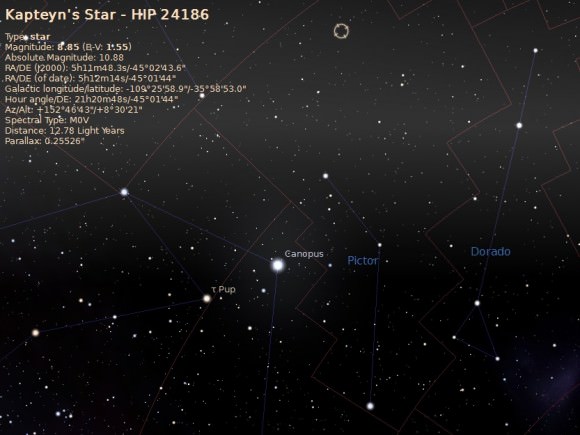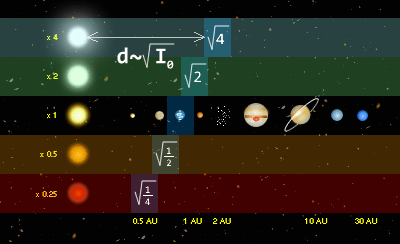Could there be life on Saturn’s large moon Titan? Asking the question forces astrobiologists and chemists to think carefully and creatively about the chemistry of life, and how it might be different on other worlds than it is on Earth. In February, a team of researchers from Cornell University, including chemical engineering graduate student James Stevenson, planetary scientist Jonathan Lunine, and chemical engineer Paulette Clancy, published a pioneering study arguing that cell membranes could form under the exotic chemical conditions present on this remarkable moon.
In many ways, Titan is Earth’s twin. It’s the second largest moon in the solar system and bigger than the planet Mercury. Like Earth, it has a substantial atmosphere, with a surface atmospheric pressure a bit higher than Earth’s. Besides Earth, Titan is the only object in our solar system known to have accumulations of liquid on its surface. NASA’s Cassini space probe discovered abundant lakes and even rivers in Titan’s polar regions. The largest lake, or sea, called Kraken Mare, is larger than Earth’s Caspian Sea. Researchers know from both spacecraft observations and laboratory experiments that Titan’s atmosphere is rich in complex organic molecules, which are the building blocks of life.
All these features might make it seem as though Titan is tantalizingly suitable for life. The name ‘Kraken’, which refers to a legendary sea monster, fancifully reflects the eager hopes of astrobiologists. But, Titan is Earth’s alien twin. Being almost ten times further from the sun than Earth is, its surface temperature is a frigid -180 degrees Celsius. Liquid water is vital to life as we know it, but on Titan’s surface all water is frozen solid. Water ice takes on the role that silicon-containing rock does on Earth, making up the outer layers of the crust.
The liquid that fills Titan’s lakes and rivers is not water, but liquid methane, probably mixed with other substances like liquid ethane, all of which are gases here on Earth. If there is life in Titan’s seas, it is not life as we know it. It must be an alien form of life, with organic molecules dissolved in liquid methane instead of liquid water. Is such a thing even possible?
The Cornell team took up one key part of this challenging question by investigating whether cell membranes can exist in liquid methane. Every living cell is, essentially, a self-sustaining network of chemical reactions, contained within bounding membranes. Scientists think that cell membranes emerged very early in the history of life on Earth, and their formation might even have been the first step in the origin of life.
Here on Earth, cell membranes are as familiar as high school biology class. They are made of large molecules called phospholipids. Each phospholipid molecule has a ‘head’ and a ‘tail’. The head contains a phosphate group, with a phosphorus atom linked to several oxygen atoms. The tail consists of one or more strings of carbon atoms, typically 15 to 20 atoms long, with hydrogen atoms linked on each side. The head, due to the negative charge of its phosphate group, has an unequal distribution of electrical charge, and we say that it is polar. The tail, on the other hand, is electrically neutral.

These electrical properties determine how phospholipid molecules will behave when they are dissolved in water. Electrically speaking, water is a polar molecule. The electrons in the water molecule are more strongly attracted to its oxygen atom than to its two hydrogen atoms. So, the side of the molecule where the two hydrogen atoms are has a slight positive charge, and the oxygen side has a small negative charge. These polar properties of water cause it to attract the polar head of the phospholipid molecule, which is said to be hydrophilic, and repel its nonpolar tail, which is said to be hydrophobic.
When phospholipid molecules are dissolved in water, the electrical properties of the two substances work together to cause the phospholipid molecules to organize themselves into a membrane. The membrane closes onto itself into a little sphere called a liposome. The phospholipid molecules form a bilayer two molecules thick. The polar hydrophilic heads face outward towards the water on both the inner and outer surface of the membrane. The hydrophobic tails are sandwiched between, facing each other. While the phospholipid molecules remain fixed in their layer, with their heads facing out and their tails facing in, they can still move around with respect to each other, giving the membrane the fluid flexibility needed for life.
Phospholipid bilayer membranes are the basis of all terrestrial cell membranes. Even on its own, a liposome can grow, reproduce and aid certain chemical reactions important to life, which is why some biochemists think that the formation of liposomes might have been the first step towards life. At any rate, the formation of cell membranes must surely been an early step in life’s emergence on Earth.
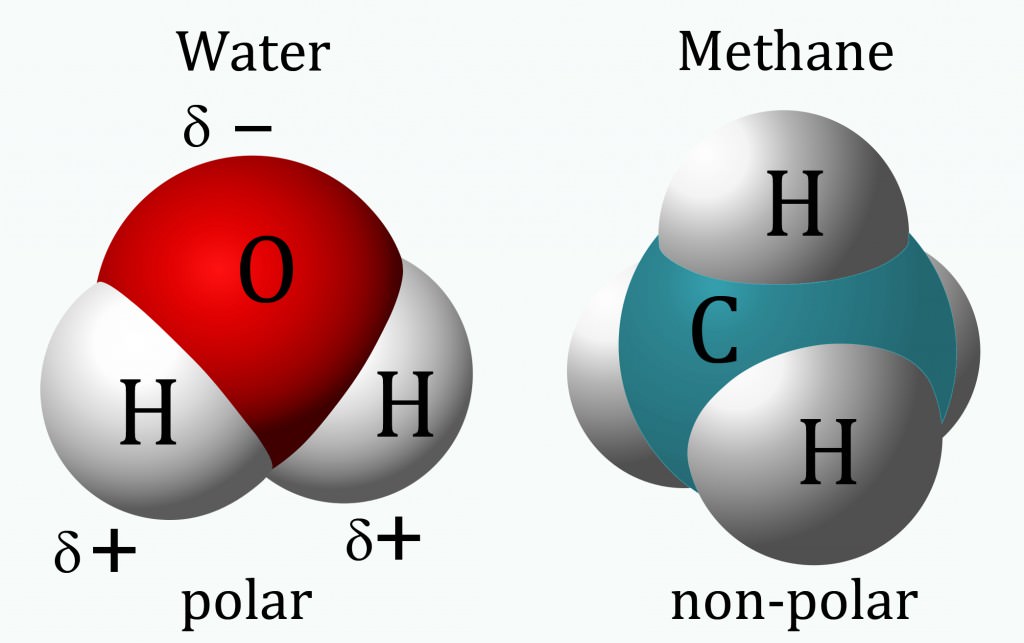
If some form of life exists on Titan, whether sea monster or (more likely) microbe, it would almost certainly need to have a cell membrane, just like every living thing on Earth does. Could phospholipid bilayer membranes form in liquid methane on Titan? The answer is no. Unlike water, the methane molecule has an even distribution of electrical charges. It lacks water’s polar qualities, and so couldn’t attract the polar heads of phospholipid molecule. This attraction is needed for the phospholipids to form an Earth-style cell membrane.
Experiments have been conducted where phospholipids are dissolved in non-polar liquids at Earthly room temperature. Under these conditions, the phospholipids form an ‘inside-out’ two layer membrane. The polar heads of the phospholipid molecules are at the center, attracted to one another by their electrical charges. The non-polar tails face outward on each side of the inside-out membrane, facing the non-polar solvent.
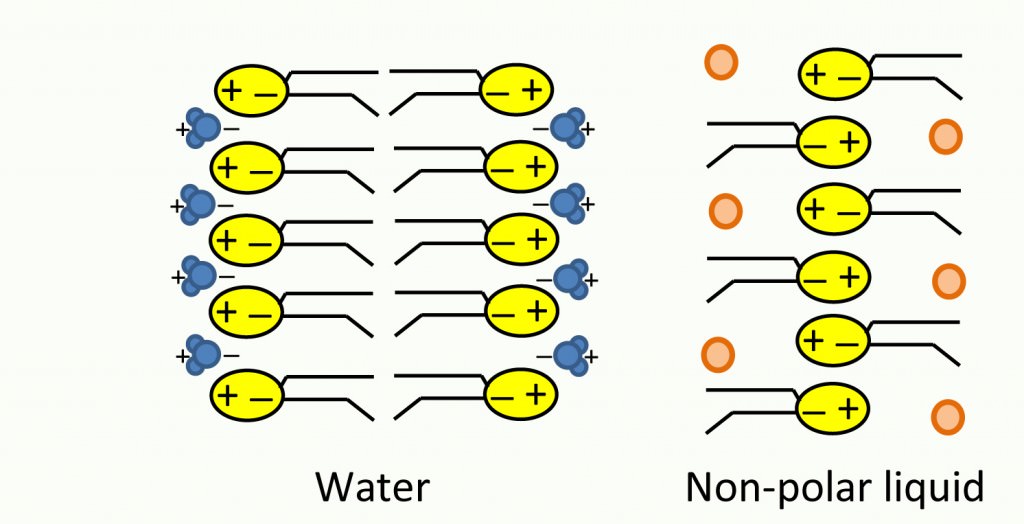
Could Titanian life have an inside out phospholipid membrane? The Cornell team concluded that this wouldn’t work, for two reasons. The first is that at the cryogenic temperatures of liquid methane, the tails of phospholipids become rigid, depriving any inside-out membrane that might form of the fluid flexibility needed for life. The second is that two key ingredients of phospholipids; phosphorus and oxygen, are probably unavailable in the methane lakes of Titan. In their search for Titanian cell membranes, the Cornell team needed to probe beyond the familiar realm of high school biology.
Although not composed of phospholipids, the scientists reasoned that any Titanian cell membrane would nevertheless be like the inside-out phospholipid membranes created in the lab. It would consist of polar molecules clinging together electrically in a solution of non-polar liquid methane. What molecules might those be? For answers the researchers looked to data from the Cassini spacecraft and from laboratory experiments that reproduced the chemistry of Titan’s atmosphere.
Titan’s atmosphere is known to have a very complex chemistry. It is made mostly of nitrogen and methane gas. When the Cassini spacecraft analyzed its composition using spectroscopy it found traces of a variety of compounds of carbon, nitrogen, and hydrogen, called nitriles and amines. Researchers have simulated the chemistry of Titan’s atmosphere in the lab by exposing mixtures of nitrogen and methane to sources of energy simulating sunlight on Titan. A stew of organic molecules called ‘tholins’ is formed. It consists of compounds of hydrogen and carbon, called hydrocarbons, as well as nitriles and amines.
The Cornell investigators saw nitriles and amines as potential candidates for their Titanian cell membranes. Both are polar molecules that might stick together to form a membrane in non-polar liquid methane due to the polarity of nitrogen containing groups found in both of them. They reasoned that candidate molecules must be much smaller than phospholipids, so that they could form fluid membranes at liquid methane temperatures. They considered nitriles and amines containing strings of between three and six carbon atoms. Nitrogen containing groups are called ‘azoto’ –groups, so the team named their hypothetical Titanian counterpart to the liposome the ‘azotosome’.
Synthesizing azotosomes for experimental study would have been difficult and expensive, because the experiments would need to be conducted at the cryogenic temperatures of liquid methane. But since the candidate molecules have been studied extensively for other reasons, the Cornell researchers felt justified in turning to the tools of computational chemistry to determine whether their candidate molecules could cohere as a flexible membrane in liquid methane. Computational models have been used successfully to study conventional phospholipid cell membranes.


The group’s computational simulations showed that some candidate substances could be ruled out because they would not cohere as a membrane, would be too rigid, or would form a solid. Nevertheless, the simulations also showed that a number of substances would form membranes with suitable properties. One suitable substance is acrylonitrile, which Cassini showed is present in Titan’s atmosphere at 10 parts per million concentration. Despite the huge difference in temperature between cryogenic azotozomes and room temperature liposomes, the simulations showed them to exhibit strikingly similar properties of stability and response to mechanical stress. Cell membranes, then, are possible for life in liquid methane.

The scientists from Cornell view their findings as nothing more than a first step towards showing that life in liquid methane is possible, and towards developing the methods that future spacecraft will need to search for it on Titan. If life is possible in liquid methane, the implications ultimately extend far beyond Titan.
When seeking conditions suitable for life in the galaxy, astronomers typically search for exoplanets within a star’s habitable zone, defined as the narrow range of distances over which a planet with an Earth-like atmosphere would have a surface temperature suitable for liquid water. If methane life is possible, then stars would also have a methane habitable zone, a region where methane could exist as a liquid on a planet or moon, making methane life possible. The number of habitable worlds in the galaxy would be greatly increased. Perhaps, on some worlds, methane life evolves into complex forms that we can scarcely imagine. Maybe some of them are even a bit like sea monsters.
References and Further Reading:
N. Atkinson (2010) Alien Life on Titan? Hang on Just a Minute, Universe Today.
N. Atkinson (2010) Life on Titan Could be Smelly and Explosive, Universe Today.
M. L. Cable, S. M. Horst, R. Hodyss, P. M. Beauchamp, M. A. Smith, P. A. Willis, (2012) Titan tholins: Simulating Titan organic chemistry in the Cassini-Huygens era, Chemical Reviews, 112:1882-1909.
E. Howell (2014) Titan’s Majestic Mirror-Like Lakes Will Come Under Cassini’s Scrutiny This Week, Universe Today.
J. Major (2013) Titan’s North Pole is Loaded With Lakes, Universe Today.
C. P. McKay, H. D. Smith, (2005) Possibilities for methanogenic life in liquid methane on the surface of Titan, Icarus 178: 274-276.
J. Stevenson, J. Lunine, P. Clancy, (2015) Membrane alternatives in worlds without oxygen: Creation of an azotosome, Science Advances 1(1):e1400067.
S. Oleson (2014) Titan submarine: Exploring the depths of Kraken, NASA Glenn Research Center, Press release.
Cassini Solstice Mission, NASA Jet Propulsion Laboratory
NASA and ESA celebrate 10 years since Titan landing, NASA 2015

